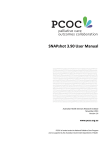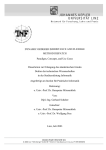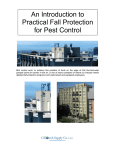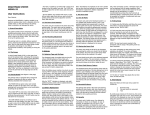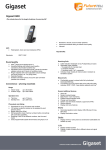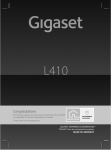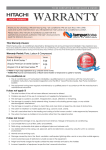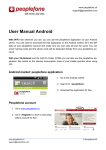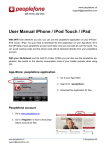Transcript
Driving and Car Phones Use A Car Phone Safely • • • • More and more people including a growing percentage of pest control technicians are carrying and using cellular phones or 2-way radios at work. National accident data clearly demonstrates that this trend is leading to more automobile accidents. Driving can be difficult enough even when you concentrate completely on the road. But driving while you dial a phone or balance it to your ear can be distracting and potentially dangerous. Car phones may be convenient for those who own them but, if not used properly, drivers with car phones are a danger to themselves and everyone on the road. While there is no research that demonstrates that car phone use while driving increases crash risk, anything that takes a driver's concentration off the road presents a problem and increases the possibility of an accident. At 55 miles per hour, a vehicle travels the length of a football field in 3.7 seconds -- less time than it takes to dial a phone number. America's growing enchantment with cellular mobile phones in autos, vans, RV's and trucks brings with it the need for renewed emphasis on safe driving practices. The PCOC Insurance Program offers this safety information about cellular phones: • • • • • When purchasing a car phone, consider type of phone and its ease of operation. Safety and insurance professionals alike uniformly suggests a cellular phone with a hands-free speakerphone option, with the microphone installed in the sun visor directly above the driver's line of vision. While employers may be tempted to save money by not purchasing hands-free speakerphone options for their employees, they may pay a larger price later. The handset should be placed for the driver's maximum comfort and convenience by being easily accessible and allowing the driver to sit and drive normally. Every user also should insist on a dealer demonstration of mobile phone use before and during a test drive. Once the motorist is ready to begin actual use of a cellular mobile phone, he or she should remember that safe driving is the priority. The driver should keep both hands on the steering wheel and eyes on the road, using the speakerphone and letting the handset stay in its cradle whenever the vehicle is in motion. Become familiar with how to use the phone. Read the user's manual and practice using the different features. Using a car phone • • • • Mobile phone users should also assess the traffic situation before placing or receiving calls, making sure they are fully aware of road and vehicle distractions. The safest method of calling is to dial phone numbers when stopped. Most phones allow the entry of numbers for calling at the user's convenience. Further, frequently called numbers can be stored within the phone's memory to minimize dialing while driving. Safety professionals including the Peacock Group stress that phone users should remember to obey all traffic signs and signals and observe posted speed limits. A motorist on the phone should drive in the slow traffic lane in case he or she decides to pull over to complete the call. The ability to pull over into a safe stopping place is especially important if notes have to be taken. No motorist should try to take written notes while driving. Using the voice mail feature on the cellular phone can help to eliminate this distraction. PCOC Insurance emphasizes that driving safely must take precedence over phoning. When on the road, you should concentrate on safe and defensive driving, not on making phone calls. PCOC Insurance Program www.pcocinsurance.com 1
